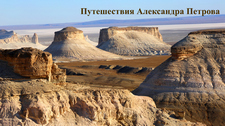You are here
Granite massif Bektau Ata.
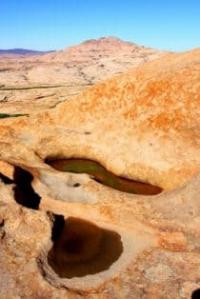
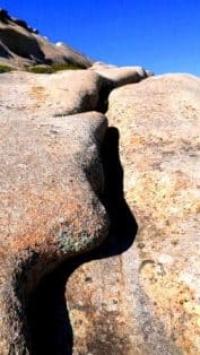
Nature sights of Central Kazakhstan.
"The geology of Bektau Ata is a veritable encyclopedia of ancient processes."
Tours Bektau Ata mountains.
General physical and geographical position of Bektau Ata mountain range.
Bektau Ata Mountains, a distinct rocky outcrop amidst the steppe, range in elevation from 600 to 1,214 meters above sea level. They are located 71 kilometers from northwestern part of Lake Balkhash and city of Balkhash, east of Tabakenttatyr (Kentarlau) Valley, with its vast, gently rolling plains that transition into semi-desert zones, in Aktogay district of Karaganda region.
From above, Bektau Ata appears to be a solitary, rocky island emerging from the vast ocean of the steppes of Central Kazakhstan. Bektau Ata Mountains are divided into five mountain ranges, extending 15 kilometers from east to west and 9 kilometers from south to north.
The area of the mountain range is 213.91 square kilometers, with a perimeter of 54.2 kilometers. The eastern main mountain range is the highest, with its highest point reaching 1,214 meters above sea level – pink peak of Bektau Ata – dominating the area in the Northern Balkhash region.
The central mountain range is Sarykulzha (Kazakh for mountain argali), with a highest elevation of 1,082 meters above sea level.
The western range is Konyrkulzha 1 (Kazakh for brown argali), with an elevation of 976 meters above sea level.
The northeastern range is Zhaltas, with a highest elevation of 824 meters above sea level.
The northernmost mountain range is Karashoky, with an elevation of 893 meters above sea level, and Konyrkulzha 2, with an elevation of 825 meters above sea level. The Bektauata mountain range is small in area (4,000 hectares), but it contains an extraordinary diversity of bizarre rock formations and thorny gorges.
Over millennia, weathering processes have eroded the granite, and where they have yielded, they have taken on the most fantastic shapes. These formations are called "Mushroom," "Chest," "Turtle," and "Three-Tooth." Bektau Ata State Nature Reserve is a unique encounter of two contrasting landscapes - the flat semi-deserts of the Balkhash region surround a gigantic volcano that never emerged 300 million years ago.
Hidden underground for three million centuries, it now rises boldly from the vast expanses of Sary-Arka, visible from tens of kilometers away. Unborn volcanoes, never breaking through to the surface, are called plutons, after the Greek god of the underworld.
Bektau Ata Mountains - description, history, legends, and attractions.
Bektau Ata Mountains are one of the most unusual natural features in Central Kazakhstan, located in the Aktogay district of the Karaganda region, just 71 kilometers from the city of Balkhash. This granite massif, rising to 1,214 meters above sea level, is considered a unique geological natural monument and a popular destination for tourists, travelers, and photography enthusiasts.
Where are Bektau Ata Mountains?
The massif is located between the steppe plains of Kazakhstan, east of the Tabakenttatyr (Kentarlau) Valley. Bektau Ata stands out from the surrounding semi-desert landscapes, creating the impression of a lonely mountain island. This geographical isolation makes it one of the most memorable natural features in the region.
History and Legends of Bektau Ata Mountains.
Bektau Ata Mountains are closely linked with folk legends. The most famous tells of the wise elder Bektau-baba, who lived among these rocks and helped people. After his death, the massif became a place of veneration, and the local springs were considered sacred. Today, many pilgrims visit.
Main Geological Features of Bektau Ata Mountains.
Bektau Ata is a granite intrusion formed approximately 250-300 million years ago during the late Paleozoic era. The rocks were formed by ancient tectonic processes, uplifts, and subsequent weathering.
As a result, the massif's topography includes characteristic forms:
- granite, granodiorite, and porphyry are the predominant rocks;
- giant rounded domes and trough-shaped depressions;
- stone niches and arches,
- giant, bizarrely shaped boulders,
- natural "bowls," depressions, and wells,
- granite walls and ridges.
One of the unique features of the massif is the numerous caverns and crevices created by centuries of erosion. Water and wind have sculpted an entire "stone civilization" here. Bektau-Ata is a valuable site for scientific research and an example of Kazakhstan's unique granite landscape.
The geology of Bektau-Ata is a veritable encyclopedia of ancient processes.
Climate and Nature of Bektau Ata Mountains.
The region's climate is sharply continental: hot summers, little snow in the winter, and little precipitation. However, within the massif, a distinct microclimate develops – it is cooler, and the crevices retain moisture longer. The flora includes wormwood steppe communities, saltwort, feather grass, rock gypsophila (Gypsophila rupestris A.Kuprian): Bektauta salt marsh (Galatella bectauatensis Kupr.): pond violet (Viola stagnina Kit. ex Schult): Kazakhstan celandine (Erysimum kazachstanicum Botsch.): Turgai skullcap (Scutellaria turgaica Juz.): (Rindera tetraspis Pall.) Rindera tetraspis: (Rosa spinosissima L.) prickly rose: (Iris glaucescens) glaucous iris, glaucous iris: (Geranium transversale (Kar. & Kir.) transverse geranium: (Hedysarum bectauatavicum Bajt.) Bektauatavsky sweetvetch: (Tragopogon ruber S.G. Gmel.) red salsify, Kazakh salsify, Kazakh salsify: (Halimodendron halodendron (Pall.) silver chingil, silver chemoss: (Salix vinogradovii A.K.) Vinogradov willow: (Populus canadensis Moench.) Canadian poplar and rare lichens.
There are goitered gazelles, argali, foxes, corsacs, and steppe birds, including birds of prey.
Main attractions of Bektau Ata Mountains.
Mountains are of volcanic origin and impress with their unusual shapes, which scientists believe were formed by wind and rain over millennia:
- Bektau Ata, the main peak, rises more than 1,214 meters above sea level and dominates the landscape, visible for tens of kilometers.
- Aulie Tas Cave with a small seasonal lake inside.
- Stone Turtle Rock, one of the most recognizable photo spots.
- Mushroom Rock, a natural arch formed by the wind.
- Chest Rock, a freestanding rock over 70 meters high, resembling a chest.
- Seasonal lakes: during the rainy season, picturesque small lakes form in the gorges, reflecting the rocks. The entire complex consists of unique stone "petals" and intricate curves created by nature, making it resemble an alien landscape.
- a stone wall - a smooth granite surface approximately 200 meters long,
- healing springs in the vicinity of the Bektau Ata massif,
- small green oases hidden in the gorges of the massif,
- the triangular stone "Kyz Aulie" (Holy Virgin), a place of worship of holy spirits near the Aulie Tas cave,
- in the eastern part of the mountain range, south of the Karaadyr tract, there is a small reservoir consisting of two parts,
- the Kazak juniper (Juniperus sabina) is common in the Bektau Ata mountains (Kazakh "kara arsha" or "arsha kazak"), a creeping shrub growing on rocks and dry mountain slopes,
- tulips grow in the vicinity of the Bektau Ata mountains: Altai tulips (Tulipa altaica) and drooping tulips (Tulipa patens),
- in the mountains Bektau Ata is home to the Bektau Ata State Zoological Reserve,
- During rainy seasons and in spring, small lakes form on the flat granite rocks,
- Astragalus kessleri, a rare legume plant also known as Chinese ginseng, grows in the Bektau Ata valley,
- Karagash valley is home to the mausoleum of Shashubai Koshkarbayev (1865 - 1952), a Kazakh akyn, poet, and composer who performed his songs accompanied by the accordion and dombra. He was awarded the title of Honored Artist of the Kazakh SSR (1941).
Shashubai's works were compiled into the books "Soile, Shasheke!" (1942) (the akyn began his performances with this phrase, meaning "Speak, Shashubai!"). "Ak Kaiyn" (1984), and were also published in the collection "Aitys" (1966). The akyn's works, including aitys with his participation, were translated into Russian by the poet Nikolai Titov.
During Soviet times, Shashubai's song "Ak Kaiyn" ("White Birch") was performed by Manarbek Yerzhanov. "At the Koyandy and Karkaraly fairs, he performed various tricks, riding a horse standing up, and playing the accordion at full gallop. They say that Shashubai loved to sing while standing on a trotting horse, and people ran after him to hear him sing."
Why visit Bektau Ata.
Bektau Ata is more than just a mountain range. It is a place of power, uniting the history, geology, and cultural heritage of Kazakhstan. Here you can see majestic cliffs, walk along ancient trails, hear legends, and enjoy the silence that Only the steppe wind disturbs the atmosphere.
The natural beauty of the Bektau Ata Mountains makes them a popular destination for tourism, outdoor activities, camping, and scientific excursions.
Geographic coordinates of Bektau Ata mountain range: N47 ° 27'04 E74 ° 46'33
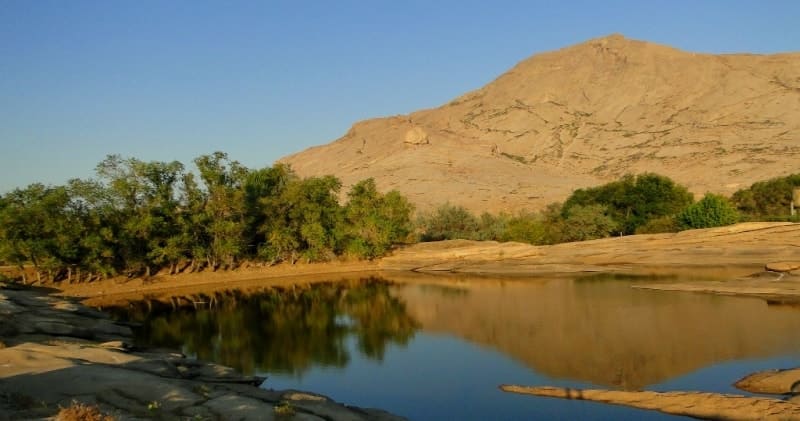


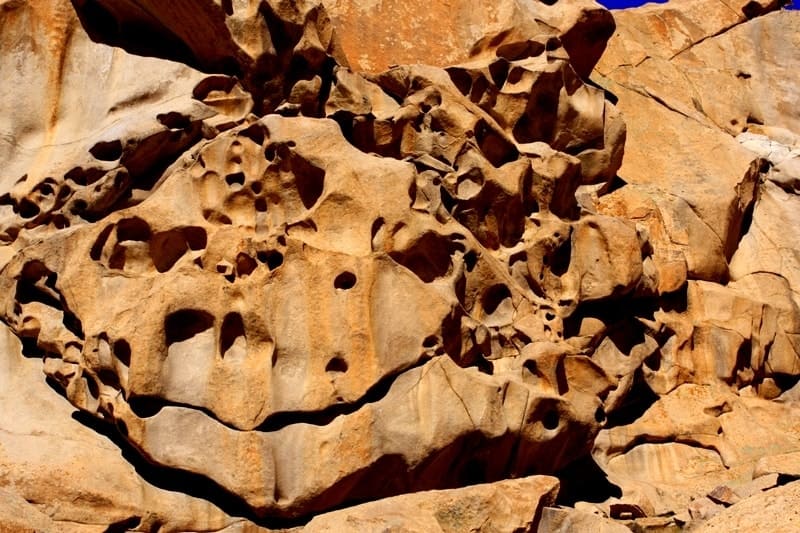
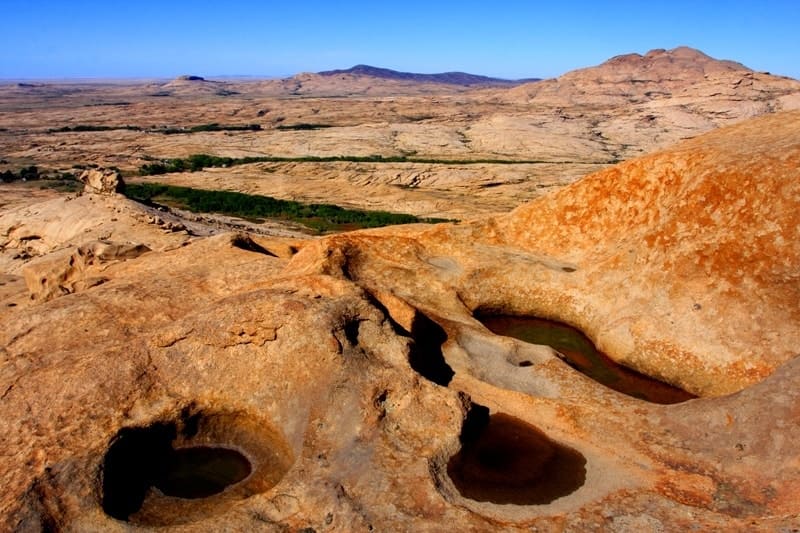
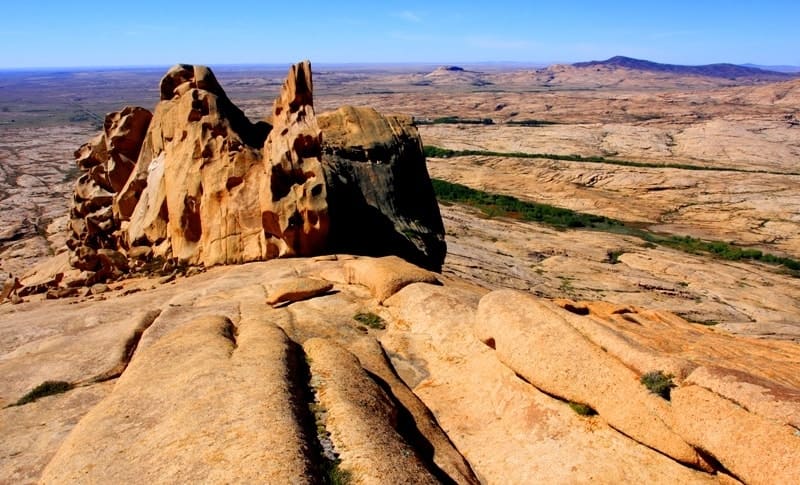
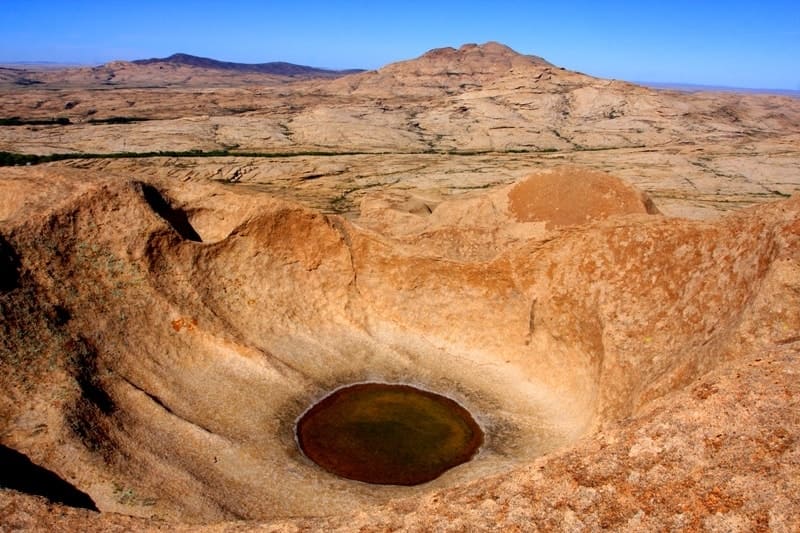
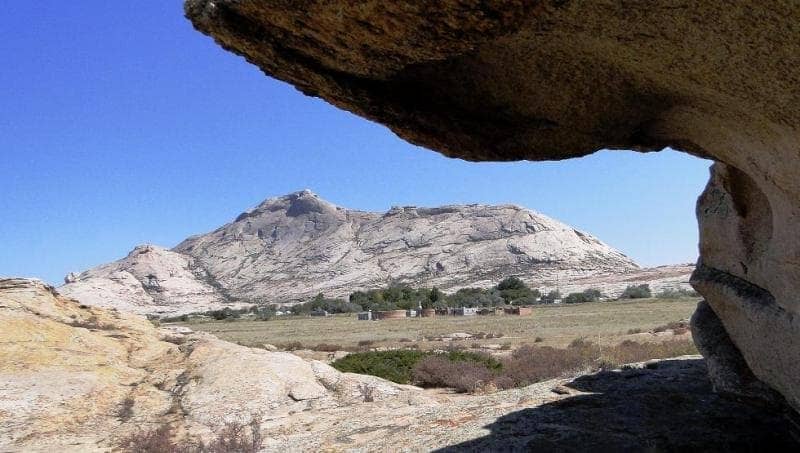
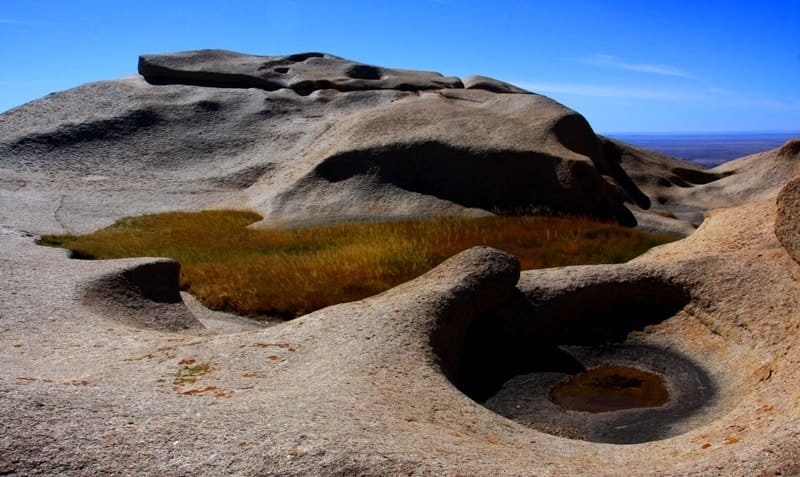
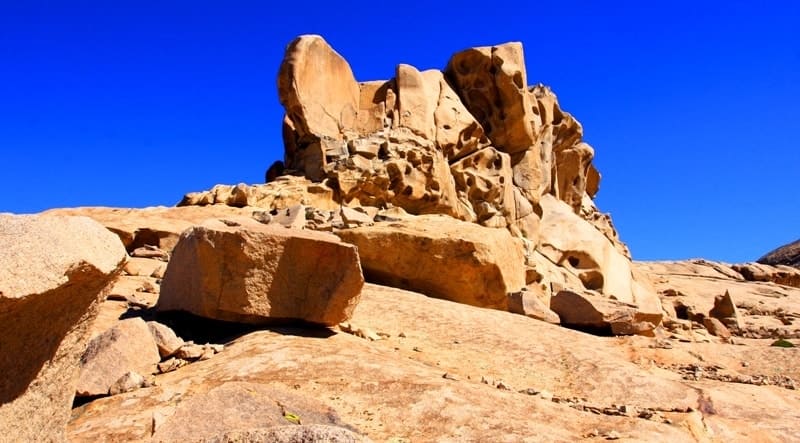
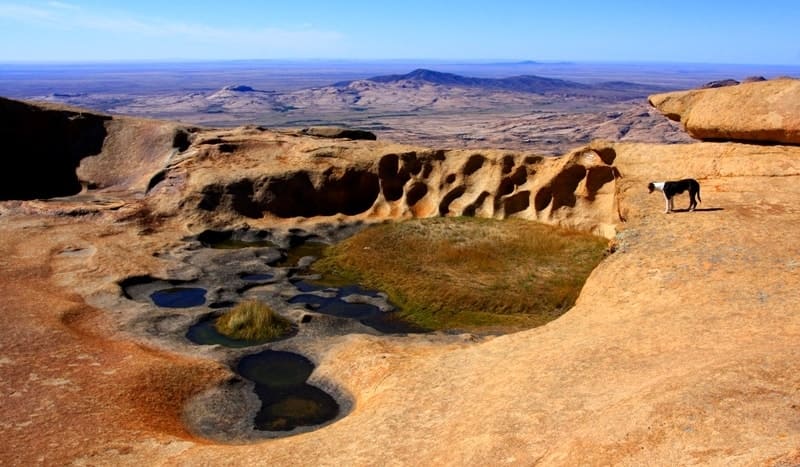

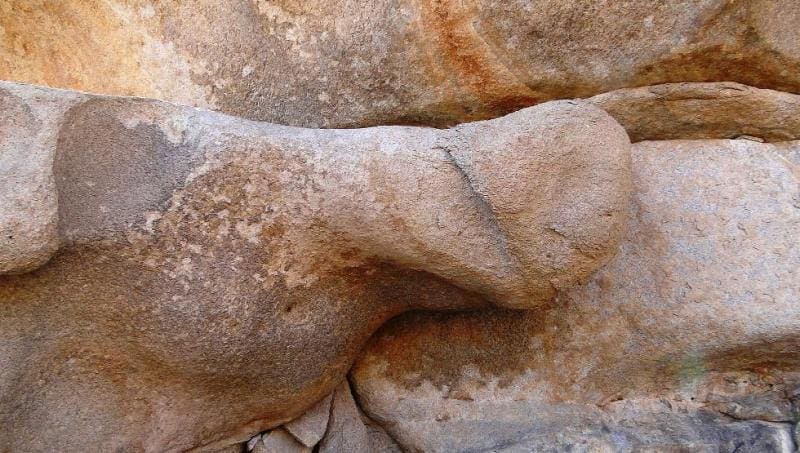

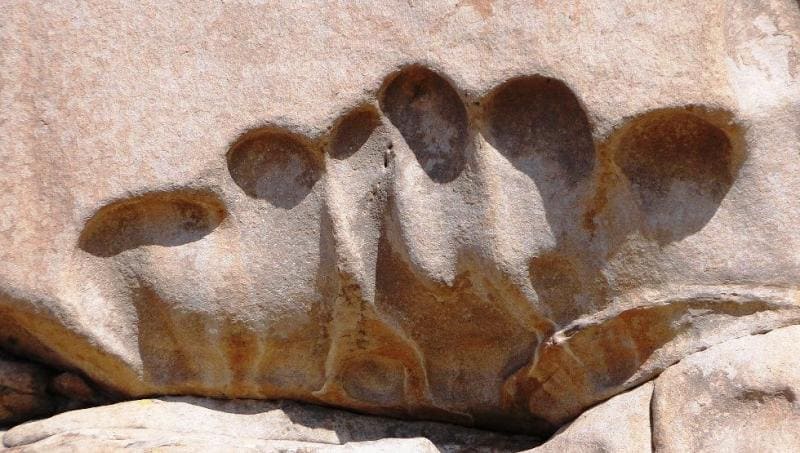


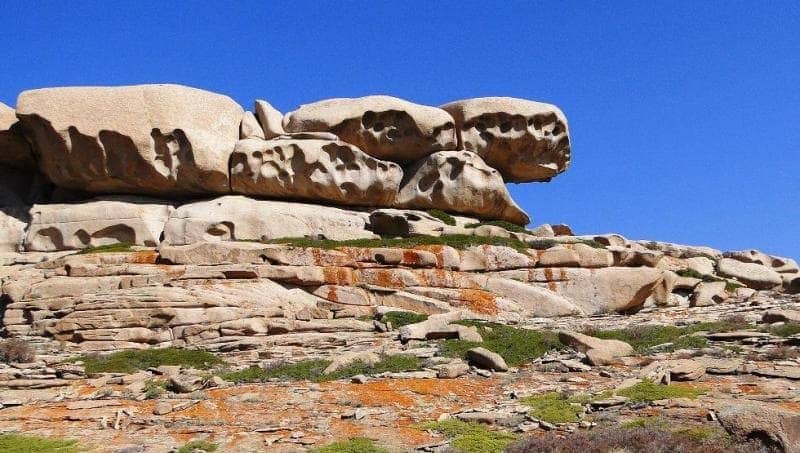
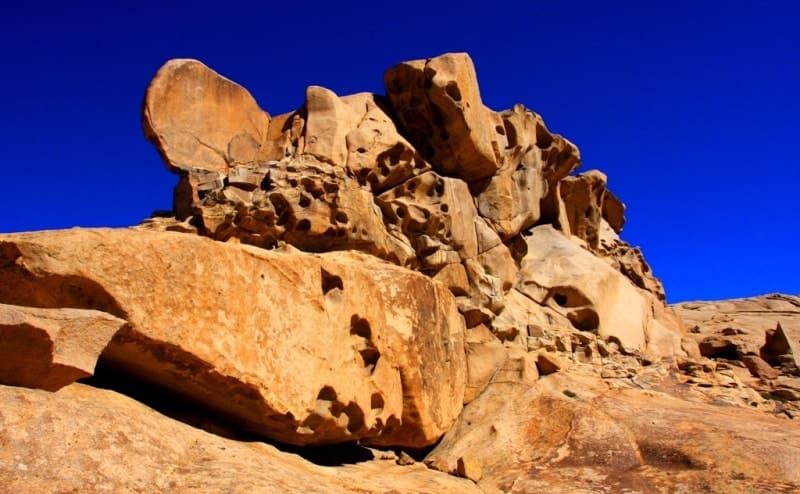
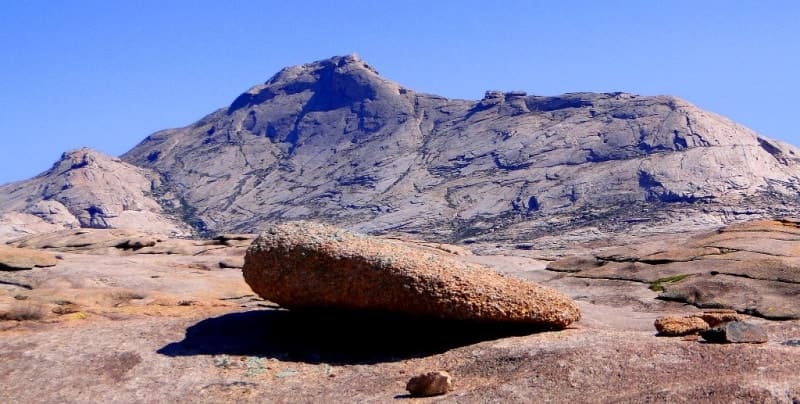
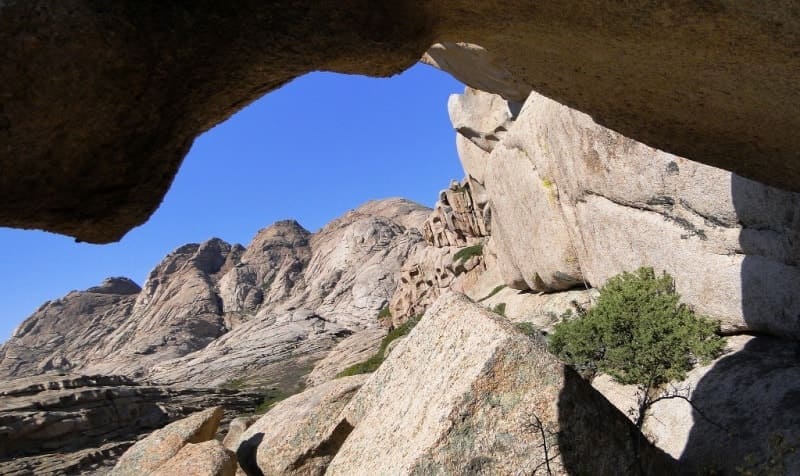
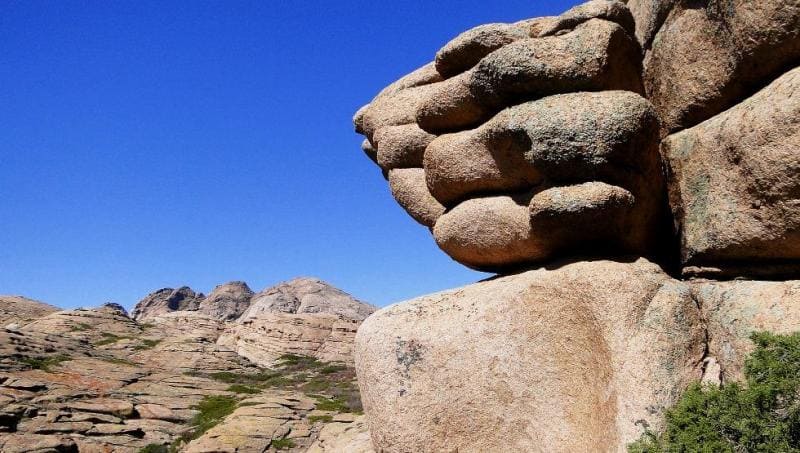
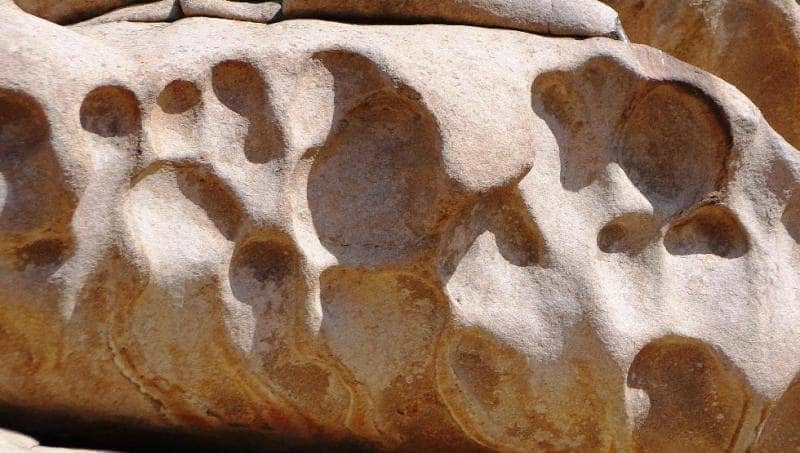
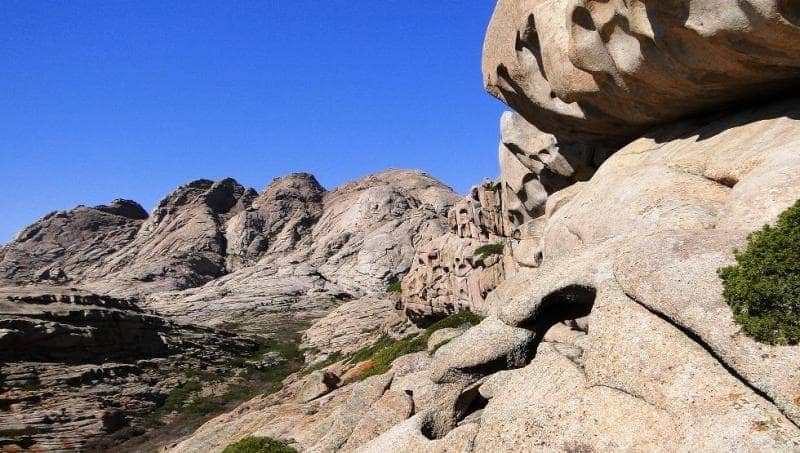
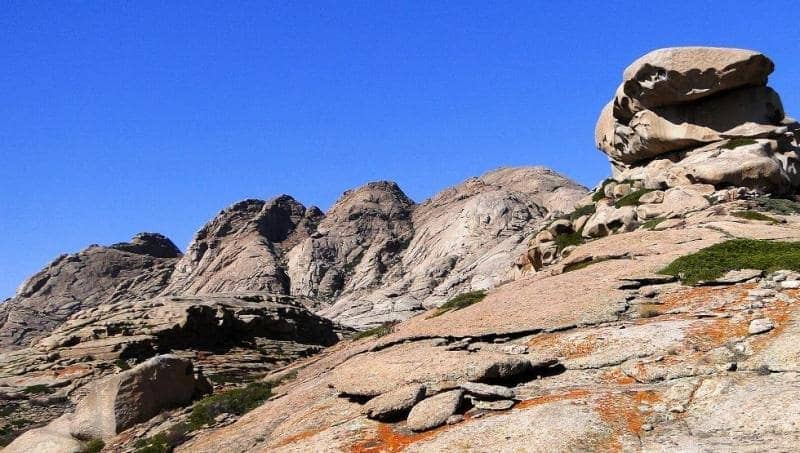
Authority and photos by:
Alexander Petrov.






